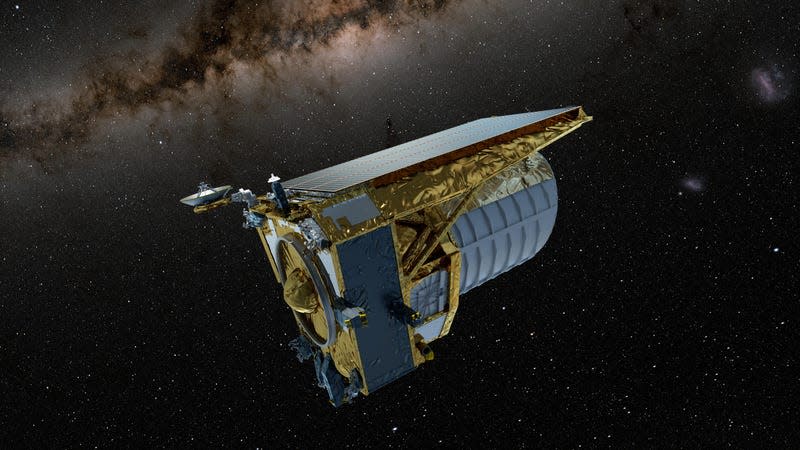Watch Live: SpaceX to Launch Euclid—Europe's Dark Universe Telescope

The European Space Agency (ESA) is gearing up for the launch of its highly anticipated mission to explore the cosmic dark side.
The Euclid space telescope is scheduled to launch on board a SpaceX Falcon 9 rocket on Saturday at 11:11 a.m. ET, lifting off from Cape Canaveral Space Force Station in Florida. There are plenty of viewing options for the launch as both ESA and NASA will provide a live broadcast of the start of Euclid’s journey to space.
Read more
ESA will broadcast Euclid’s launch through its Web TV, as well as the space agency’s Youtube channel, with the livestream beginning at 10:30 a.m. ET. NASA will also livestream the launch of the space telescope through NASA Television and the NASA app, with the space agency’s broadcast also beginning at 10:30 a.m. ET. You can also tune in through the live feed below.
NASA Live: Official Stream of NASA TV
The Euclid space telescope will observe the universe at infrared wavelengths in search of two of the biggest mysteries of the cosmos: dark matter and dark energy. Dark matter and dark energy make up around 95% of the known universe, and yet scientists aren’t exactly sure what they are nor have they ever made a direct detection of them.
Once it’s launched, the telescope will spend about a month traveling through space to reach its observational perch. Euclid will observe the cosmos from L2 (or the second Lagrange point), located about one million miles (1.5 million kilometers) from Earth, allowing the telescope to be gravitationally suspended in this region of space in order to minimize fuel burns used to stay in its orbital position.
Euclid will spend about six years on its mission of probing the dark universe, collecting data on distant cosmic sources that help explain the properties of dark matter and dark energy.
ESA’s space telescope was originally meant to launch in 2022 aboard a Russian Soyuz rocket but the space agency halted its cooperation with Russia following the invasion of Ukraine, forcing it to resort to U.S. rocket company instead. Since it stopped relying on Soyuz, Europe has struggled with plenty of rocket woes amid a shortage of options to reach orbit. ESA’s other option was Arianespace’s heavy-lift launch vehicle, but the French company has yet to launch its next-generation Ariane 6 rocket.
For more spaceflight in your life, follow us on Twitter and bookmark Gizmodo’s dedicated Spaceflight page.
More from Gizmodo
Sign up for Gizmodo's Newsletter. For the latest news, Facebook, Twitter and Instagram.

